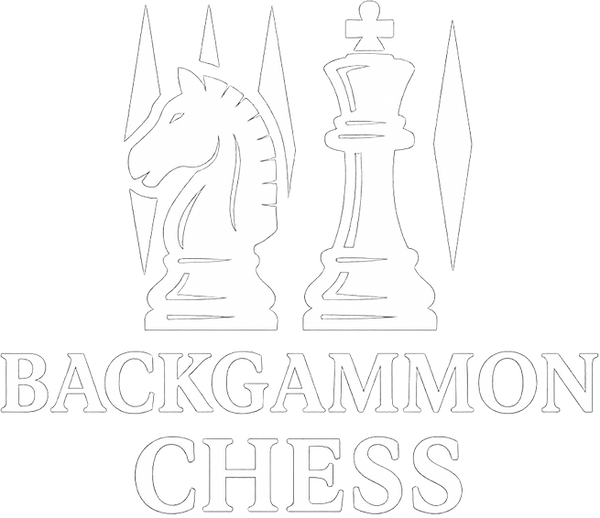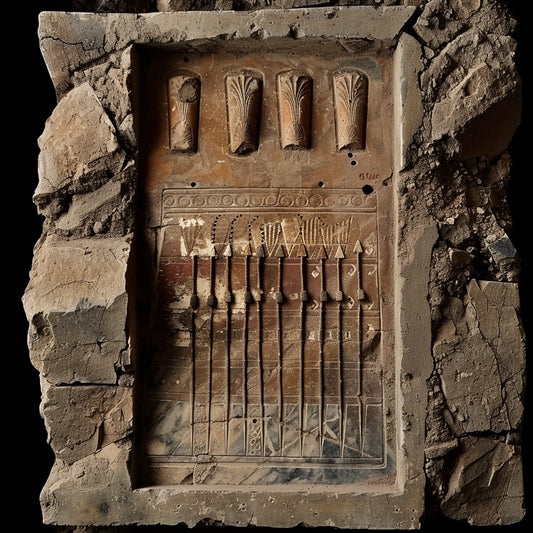
The History of Backgammon: A Journey Through Time
In a world where digital games dominate the entertainment landscape, there is one ancient game that has retained its charm and popularity throughout the millennia. This game is backgammon - a perfect blend of strategy, luck and history that continues to fascinate and bring people of all ages together. The history of backgammon , also known as backgammon , is a fascinating story of ancient civilizations, wars, kings and ordinary people, all united by a passion for this game.
Backgammon is not only one of the oldest board games in history, but also one of the few that has crossed eras and cultures, adapting and evolving but keeping its essence intact. From the first evidence of its existence in ancient Mesopotamia, passing through the Egypt of the pharaohs, Greece and classical Rome, to modern coffeehouses and homes, backgammon has witnessed and participated in the evolution of human society.
This article aims to explore backgammon 's impressive journey through history. We will trace its mysterious origins, its spread in the ancient and medieval world, the moments when it was banned and its revival, as well as its special place in Romanian culture and society. We will also take a look at its cultural impact and how it has influenced art, literature and social life over the centuries.
Exploring the history of backgammon gives us a unique window into understanding the depths of the game and its place at the heart of human culture. It is a story of how a simple backgammon game was able to overcome the barriers of time and become a symbol of intelligence, strategy and above all, human connection. In the following pages, we invite you to discover the fascinating history of backgammon and see how this ancient game continues to inspire and unite people around the world.

Ancient origins
Backgammon, with its ancient origins lost in the mists of time, represents one of the oldest forms of entertainment known to humanity. Archaeological discoveries have brought to light evidence of the existence of this game in ancient Mesopotamia more than 5,000 years ago, thus underscoring the depth and universality of its appeal. Stone-engraved game boards, along with meticulously carved pieces, have been found in the ruins of the cities of Ur and Shahr-e Sukhteh, providing a fascinating window into ancient times. These artifacts not only attest to the age of the game, but also to the sophistication of the civilizations that practiced it. In Ancient Egypt, the game known as "Senet" was embraced by pharaohs and people alike, considered not only a form of entertainment, but also a means of communication with the divine, reflecting beliefs and hopes of the afterlife. In ancient Persia, the variant of the game called "Nard" was so prized that legends say it was invented by a philosopher to teach young people the principles of strategy and luck. This rich cultural heritage, passed down from generation to generation, demonstrates not only the longevity of the game of backgammon , but also its unique ability to cross and adapt to various cultures and eras, maintaining its essence and popularity to this day.
Evolution of the Game
Over the millennia, backgammon has traveled through various cultures and societies, each adding their own rules and variations. In Ancient Egypt, the game was known as "Senet," and in ancient Persia, it became popular as "Nard." These early variations of the game laid the foundation for modern backgammon.

Spread in Europe
The spread of backgammon to Europe marks a fascinating chapter in its millennial history, reflecting its adaptability and popularity among different social strata. Beginning in the Middle Ages, this ancestral game traveled from the Middle East to Europe, where it was enthusiastically embraced by the nobility and later by the general population. In England, France, and Italy, backgammon evolved under various names and forms, becoming a symbol of sophistication and intellectual strategy. Especially in 16th century England, the game, then known as "Tables," became extremely popular, being played in taverns, noblemen's homes, and even at the royal court. This period saw the birth of variations of the game that contributed to the modern form of backgammon. Interestingly, despite attempts at banning by monarchs such as King Louis IX of France, who saw the game as an immoral pastime, backgammon continued to thrive, demonstrating remarkable cultural resilience. This spread to Europe not only solidified backgammon's popularity, but also set the stage for its continued evolution, allowing it to become one of the most loved and played board games in the world.
Backgammon in Romania
Backgammon in Romania occupies a special place in the culture and traditions of board games, being more than a simple free time; it is an expression of social bonding and competitive spirit in a friendly way. Ever since its introduction into the Romanian cultural space, backgammon has managed to capture the imagination and interest of players of all ages, quickly becoming a beloved pastime in traditional cafes, in people's homes and, more recently, in the online environment. This popularity has not only survived the changes over the decades, but also thrived, thanks to its remarkable adaptability and ability to bring together people from various social backgrounds. Backgammon tournaments, both local and national, began to be held frequently, providing a platform for amateur and professional players to demonstrate their skills and deepen their understanding of game strategies. In addition, online backgammon communities have begun to develop, facilitating the exchange of ideas and experiences between enthusiasts regardless of geographic distance. Thus, backgammon in Romania is not only a tradition, but also a symbol of unity and shared pleasure, continuing to inspire and bring joy to the lives of players.

The Modern Era and the Revitalization of the Game
In the modern era, backgammon has experienced a remarkable renaissance, marked not only by the increase in the number of players globally, but also by the diversification and refinement of the materials used in the creation of playing sets. Two of the most popular materials in the manufacture of backgammon sets are wood and leather, each adding a distinct touch of elegance and style.
Wooden backgammon sets are highly sought after due to their quality and durability. Wood, with its warm texture and natural appearance, not only provides a pleasant playing experience, but turns every set into a piece of art. Artisans carefully select wood types such as walnut, mahogany or cherry, each adding a unique character and unmistakable beauty to the finished set. The manufacturing process involves craftsmanship and attention to detail, from the hand carving of sheet metal and parts to the fine finishes that protect and highlight the natural beauty of the wood.
Leather backgammon sets , on the other hand, represent the pinnacle of luxury and sophistication in the world of backgammon. Leather, whether natural or synthetic, offers a rich texture and superior tactile comfort, turning every game into a luxurious experience. The sophisticated design and varied colors, from classic shades of brown and black to more vibrant options, allow the set to be customized according to individual preferences. In addition, the durability and ease of care of the leather make these sets a popular choice for players who travel frequently or want to display their backgammon set as an elegant piece of decor.
The resurgence of interest in backgammon in the modern era is also supported by online communities where players of all skill levels can share their passion, learn new strategies and participate in tournaments. This revitalization of the game of backgammon reflects not only the continued appreciation for tradition and craft, but also the adaptability of backgammon to contemporary tastes and technologies. In Romania and around the world, wood and leather backgammon sets remain emblems of elegance, quality and the pleasure of playing, bringing together generations of enthusiasts of this timeless game.
Conclusion
The history of backgammon is a testament to its durability and universal appeal. From its ancient origins to its contemporary popularity, backgammon has crossed millennia, cultures and continents, remaining one of the most beloved board games. In Romania, as in other parts of the world, backgammon continues to bring people together, providing fun, challenge and the opportunity to be part of a living history.






